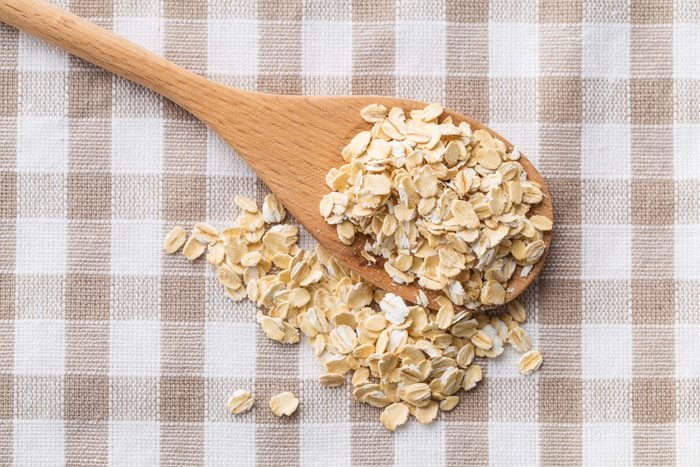Instant Oats vs. Old-Fashioned Oats: The Uses for Each Type
Updated: Feb. 27, 2024

If you've ever been part of the old-fashioned oats vs. quick oats debate when it comes to breakfast and baking, let this set the record straight on what's what.
It’s baking time! You’re set to whip up monster cookies or oatmeal dinner rolls—and discover that the recipe calls for quick-cooking oats. But there are only old-fashioned oats in the cupboard. Can you cross your fingers, swap it out and hope for the best?
The good news is: Oats are oats. There are a few types of oats, and the variety refers to the way they are prepared. Though certain meals and recipes will do best with what’s called for on the ingredient list, if you’re OK with a difference in texture, then swapping should cause no issues.
Here’s everything you need to know about substituting old-fashioned and quick-cooking oats (and one of our favorite hacks for making your own quick-cooking oats at home).
What Are Old-Fashioned Oats?
All oats start out the same: as oat groats. The difference lies in how much they’ve been processed: old-fashioned oats have been steamed and flattened. They hold their shape and texture well, making them popular choices for cookies and baked goods. They’re also great for overnight oats—because of the way they’re processed, they’re safe to eat “raw.” And yes, this is your excuse to try out some of our favorite oatmeal cookie recipes.
Rolled Oats vs. Old-Fashioned Oats
Rolled oats are another term for old-fashioned oats, so if you see that in a recipe, you’re good to go! They are sometimes also called whole oats. Learn more about the different types of oats.
What Are Quick-Cooking or Instant Oats?
Instant oats and quick-cooking oats are more processed than old-fashioned oats. Quick-cooking oats are precooked, dried and flattened, which allows them to do exactly what they promise. They can be prepared a lot faster—just needing some water—so you can whip up breakfast in minutes. But because of their convenience, they tend to lose their texture, are mushier and don’t have as distinct of a flavor.
Similar to quick-cooking oats but even more finely chopped are instant oats. These are best used for on-the-go meals rather than baked into pastries.
How to Substitute One Kind of Oats for Another
Old-fashioned oats and quick-cooking oats are basically interchangeable, although they will slightly change your final dish.
If you’re substituting old-fashioned oats for quick-cooking oats, your final dish will be chewier, and it might taste a little oat-ier. If you replace old-fashioned oats with quick-cooking oats, your dish will have less texture.
You can also make your own quick-cooking oats. Toss your old-fashioned oats in a food processor and pulse a few times to get them to mimic quick-cooking oats. Voila! Problem solved. Just don’t do it too long or you’ll end up with oat flour!
You might also encounter steel-cut oats. These oats have been chopped, rather than rolled, so they’re chewier, retain their shape while cooking and take the longest to cook. You won’t want to substitute them for rolled or quick-cooking oats. But steel-cut oats are delicious in apple pie oatmeal.
